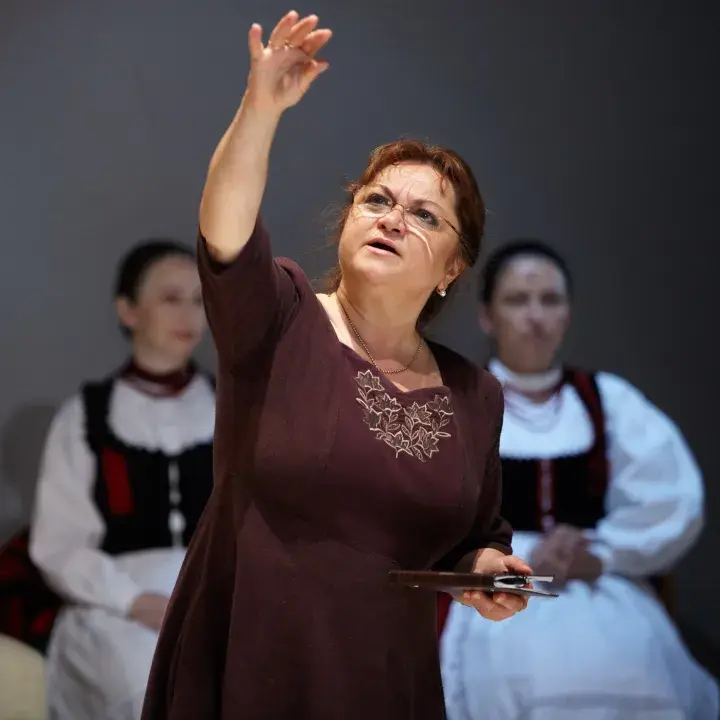Designing clothes was a passion of the Hungarian-born American fashion designer, writer and textile artist Mariska Kárász (Budapest, 1898-Danbury, USA, 1960). She made colourful garments with varied patterns, which were primarily inspired by Hungarian folk art. She left Hungary in 1914, but her interest in fashion and talent attracted her to New York, not Paris. She learned to sew and embroider by herself. She visited Hungary several times after that: in 1925, 1926 and 1930.
Her "Hungarian" fashion design period began in 1916, when Wanamaker's department store, which sold luxury goods, ordered blouses decorated with Eastern European and Hungarian designs from her. Ms Kárász's Hungarian pieces, in which she combined elements borrowed from Hungarian folk art with the requirements of the modern woman's extravagant dress, appeared years earlier than the similar pieces of other European fashion designers. She applied embroidery, batik, textile appliqués, and appliqués made of felt and embroidery made of wool yarn (shepherd's cloak embroidery) as decorative techniques. In her collection of motifs, she would use tulle embroidery from Mezőkövesd, Martos and Buzsák. She designed clothes not only for adults but also for children.
In around 1915-16, Mariska Kárász and her sister, Ilonka, joined the "Designed in America" movement founded by the curator of the textile collection at the American Museum of Natural History in New York, Morris de Camp Crawford. This collection holds many ethnographic and archaeological materials, textiles, costumes, ceramics and other objects of use from North and South America, Central and Eastern Europe and the Balkans. Members of the movement studied the museum's artefacts and worked with their motifs. This practice was later adopted by European fashion designers, and studying museum objects is now a common practice in the design process.
All of Mariska Kárász's clothing designs carried the shapes, motifs and patterns of Hungarian folk art, so her work contributed to enriching the fashion trend of the time inspired by peasant folk art. Her 1925 models featured the shepherd's cloak embroidery technique or embroidery reminiscent of peasant folk attires, which she made unique and modern with the contrast of dark and light colours. Her interpretation of a shepherd's cloak represented both the traditional embroidery as a Hungarian symbol and the motifs of the Avant-garde. She would combine the shepherd's cloak appliqué technique with various Modernist trends of the 20th century, such as Fauvism, Matisse, the circle of Blaue Reiter, Franz Marc, the Russian Avant-garde and Art Deco, creating a completely individual and peculiar way of seeing things. Her highly successful shepherd's cloak jacket carries her authentic design language, while her dress with shepherd's cloak appliqués reflects the influence of Henri Matisse's paper clippings. Matisse's art was not far from East-Central European folk art. One of his most famous paintings La blouse roumaine (The Romanian Blouse) was completed in this spirit in 1940. As our exhibition features several shepherd's cloaks, it is worth comparing Mariska Kárász's work with Éva Mészáros' jacket with shepherd's cloak appliqués made in the 1970s.
The combination of contemporary fine art trends with the Hungarian shepherd's cloak technique proved to be a hit—no wonder the clothes Mariska Kárász created aroused immense interest among well-to-do New York ladies. The New York Times noted in 1925 that "Newest Costumes Are Adorned With Vivid Needlework From Far-Away Lands." designers from Paris and New York are happy to use Hungarian and Bulgarian needlework for their models.


